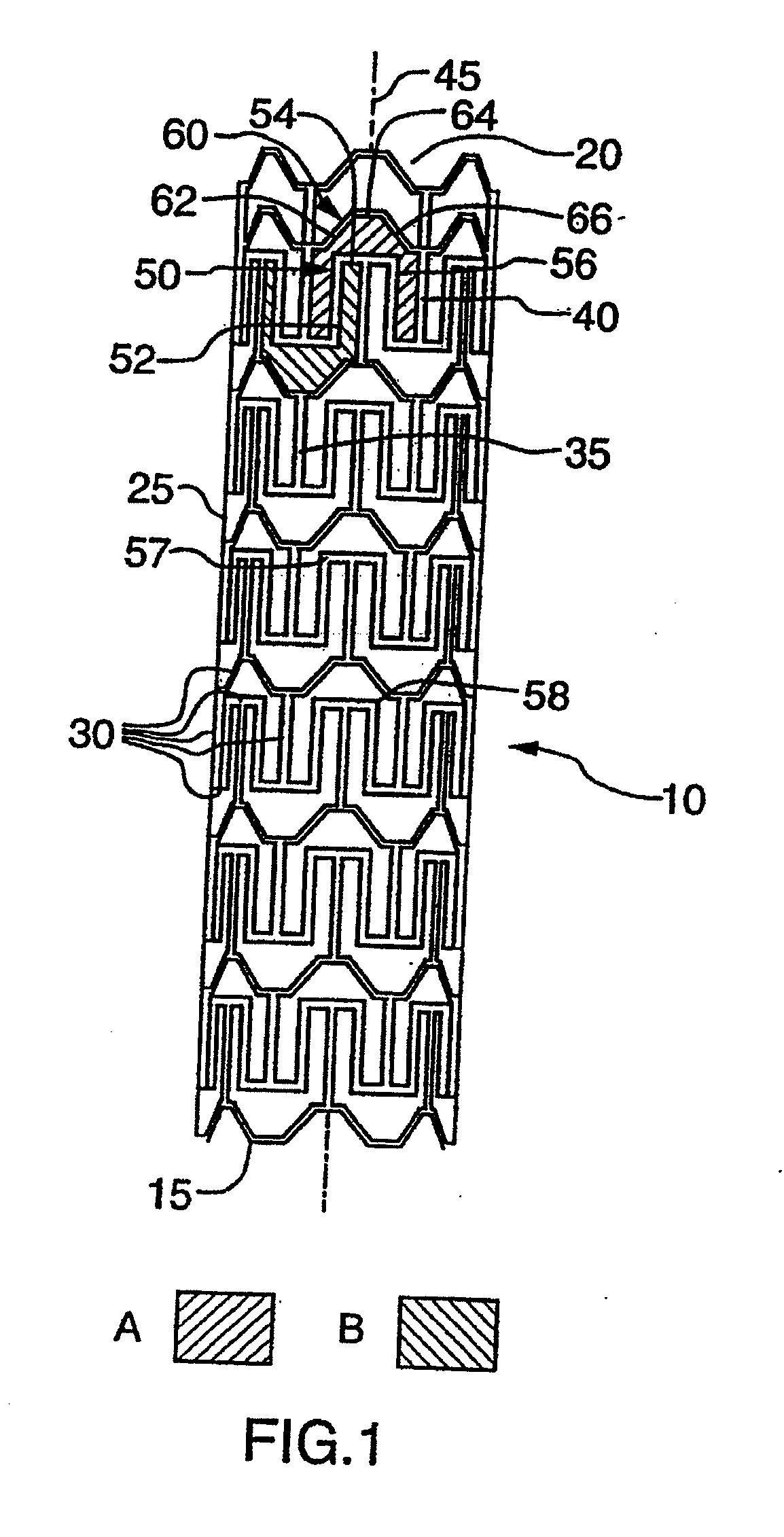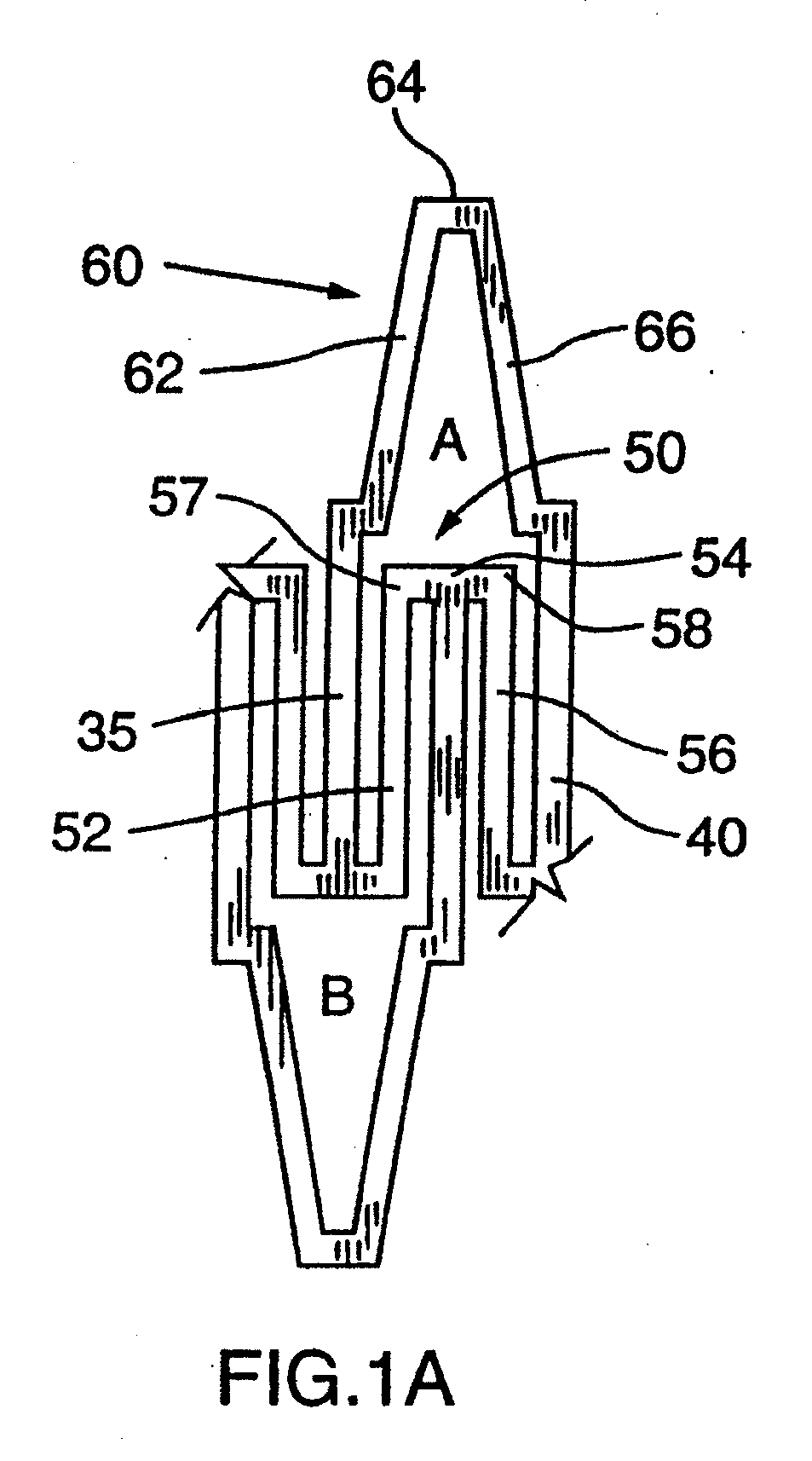Expandable stent and method for delivery of same
a stent and expandable technology, applied in the field of expandable stents, can solve the problems of reducing the reliability of the stent, reducing the stent's reliability, and applying sufficient force to maintain the patency of the body passageway, so as to facilitate the connection of the stent to the existing endoluminal prosthesis or biological material
- Summary
- Abstract
- Description
- Claims
- Application Information
AI Technical Summary
Benefits of technology
Problems solved by technology
Method used
Image
Examples
Embodiment Construction
[0053]With reference to FIG. 1, there is illustrated a stent 10. Stent 10 comprises a proximal end 15 and a distal end 20. Stent further comprises a tubular wall 25 disposed between proximal end 15 and distal end 20. As illustrated, tubular wall 25 is porous. The porosity of tubular wall 25 is defined by a plurality of intersecting members 30. Intersecting members 30 define a first repeating pattern designated A in FIG. 1.
[0054]As illustrated and with further reference to FIG. 1A, repeating pattern A is a polygon comprising a pair of side walls 35,40. Side walls 35,40 are substantially parallel to a longitudinal axis 45 of stent 10 and thus side walls 35,40 may be considered to be longitudinal struts (indeed with reference to each of the drawings, side walls may also be considered to be longitudinal struts). Side walls 35,40 are connected by a concave-shaped wall 50 and a convex-shaped wall 60.
[0055]As illustrated, concave-shaped wall 50 is made up of a trio of segments 52,54,56. In...
PUM
 Login to View More
Login to View More Abstract
Description
Claims
Application Information
 Login to View More
Login to View More - R&D
- Intellectual Property
- Life Sciences
- Materials
- Tech Scout
- Unparalleled Data Quality
- Higher Quality Content
- 60% Fewer Hallucinations
Browse by: Latest US Patents, China's latest patents, Technical Efficacy Thesaurus, Application Domain, Technology Topic, Popular Technical Reports.
© 2025 PatSnap. All rights reserved.Legal|Privacy policy|Modern Slavery Act Transparency Statement|Sitemap|About US| Contact US: help@patsnap.com



